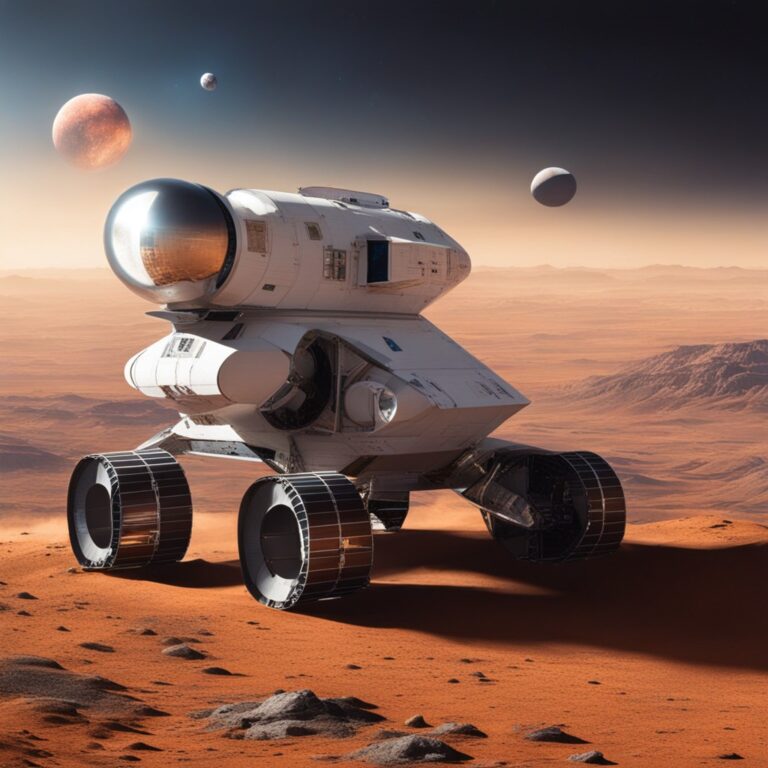The Future of Space Exploration

Space exploration has been a dream of humanity for centuries. In the early 20th century, science fiction writers like Jules Verne and H.G. Wells began to imagine what it might be like to travel to other planets. And in 1961, Yuri Gagarin became the first human to travel to space, ushering in a new era of space exploration.
Since then, we have made great progress in exploring space. We have put humans on the moon, sent probes to the farthest reaches of the solar system, and launched thousands of satellites into orbit. And now, we are on the cusp of a new era of space exploration, with the advent of new technologies that are making it possible for us to explore space more efficiently and affordably than ever before.
This article will provide a comprehensive analysis of the future of space exploration, including current space missions, future space exploration plans, and the potential for human colonization of other planets.
Current Space Missions
There are a number of current space missions that are paving the way for the future of space exploration. These missions include:
- James Webb Space Telescope (JWST): The JWST is the most powerful telescope ever built, and it is expected to revolutionize our understanding of the universe. It was launched in December 2021, and it is currently in the process of aligning its mirrors and calibrating its instruments. Once it is fully operational, the JWST will be able to study distant galaxies, exoplanets, and the early universe in more detail than ever before.
- Artemis Program: The Artemis program is NASA’s plan to return humans to the moon and eventually establish a sustainable presence there. The first Artemis mission, Artemis I, is scheduled to launch in August 2022. Artemis I will be an uncrewed mission that will test the Space Launch System (SLS) rocket and the Orion spacecraft. Artemis II, which is scheduled to launch in 2024, will be a crewed mission that will fly around the moon. Artemis III, which is scheduled to launch in 2025, will be the first crewed landing on the moon since 1972.
- Perseverance Rover: The Perseverance rover is currently exploring Mars and searching for signs of ancient life. It landed on Mars in February 2021, and it has since collected a number of rock samples that will be returned to Earth in the future. The Perseverance rover is also carrying a number of other instruments, including a helicopter called Ingenuity. Ingenuity has made several successful flights on Mars, and it has demonstrated that it is possible for aircraft to fly on other planets.
- Europa Clipper Mission: The Europa Clipper mission is scheduled to launch in 2024 and will study Jupiter’s moon Europa. Europa is thought to be a potential place for life to exist, and the Europa Clipper mission will search for signs of life and study the moon’s interior and surface.
These are just a few of the many current space missions that are helping to shape the future of space exploration. These missions are helping us to learn more about the universe, to develop new technologies, and to prepare for future human exploration of space.
Future Space Exploration Plans

In addition to the current missions, there are a number of future space exploration plans that are in development. These plans include:
- Establishing a permanent human presence on the moon: NASA plans to establish a permanent human presence on the moon by the end of the 2020s. This will involve building a lunar base and developing new technologies for living and working on the moon.
- Sending humans to Mars: NASA plans to send humans to Mars in the 2030s. This will be a challenging mission, but it is achievable with the current state of technology.
- Mining asteroids and other celestial bodies for resources: Asteroids and other celestial bodies contain a wealth of resources, such as water, metals, and minerals. NASA is developing technologies to mine these resources, which could be used to support human exploration of space and to develop new products and materials on Earth.
- Developing new propulsion technologies: Current propulsion technologies limit our ability to travel to other stars. NASA is developing new propulsion technologies, such as nuclear-powered rockets and ion engines, which could allow us to travel to other stars within decades.
These are just a few of the many future space exploration plans that are in development. These plans represent an ambitious vision for the future of space exploration, and they have the potential to revolutionize our understanding of the universe and our place in it.
Potential for Human Colonization of Other Planets
The potential for human colonization of other planets is a topic of much debate. Some experts believe that it is only a matter of time before we begin colonizing other planets, such as Mars. Others believe that human colonization